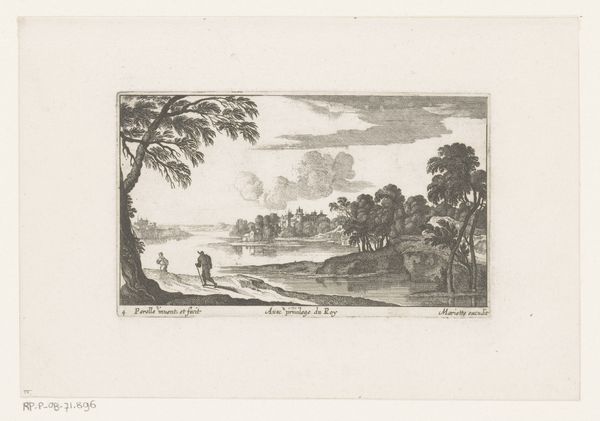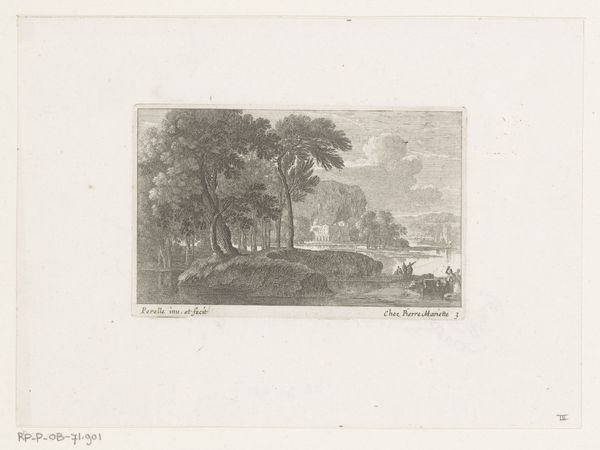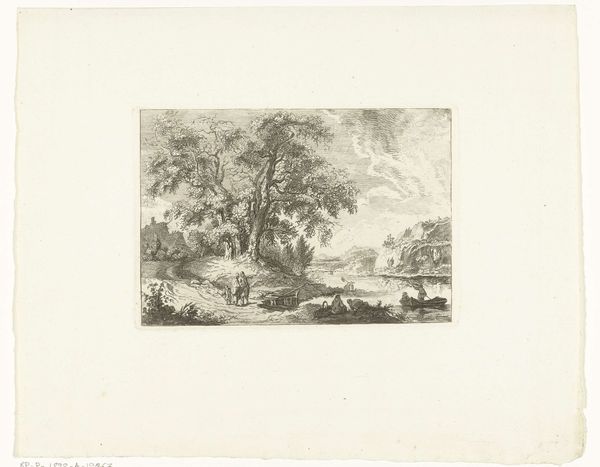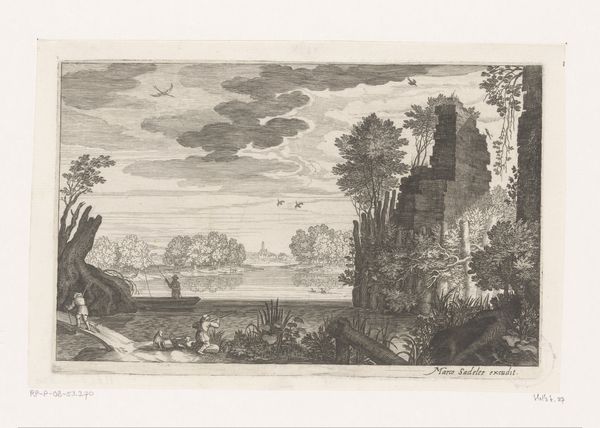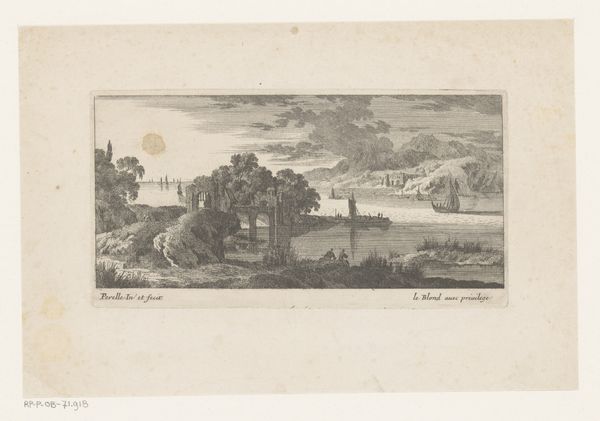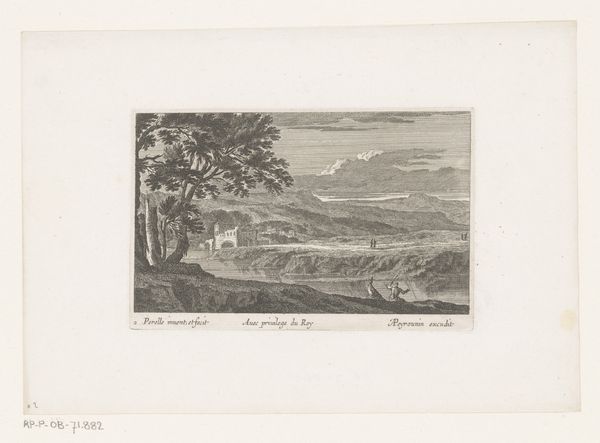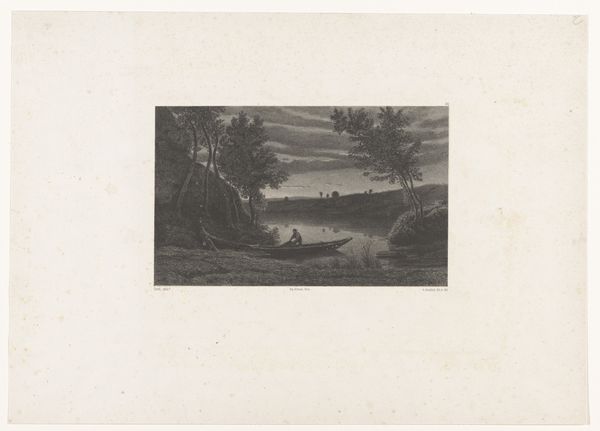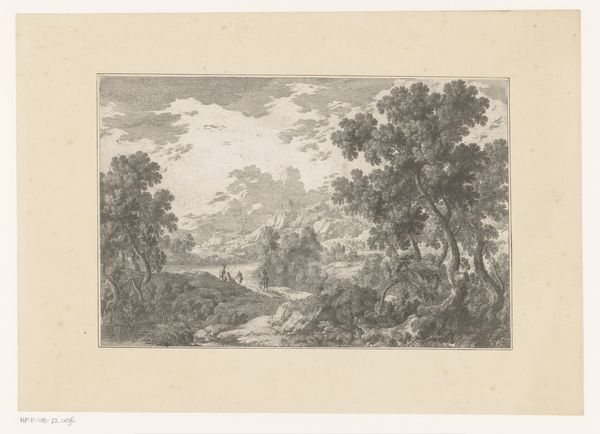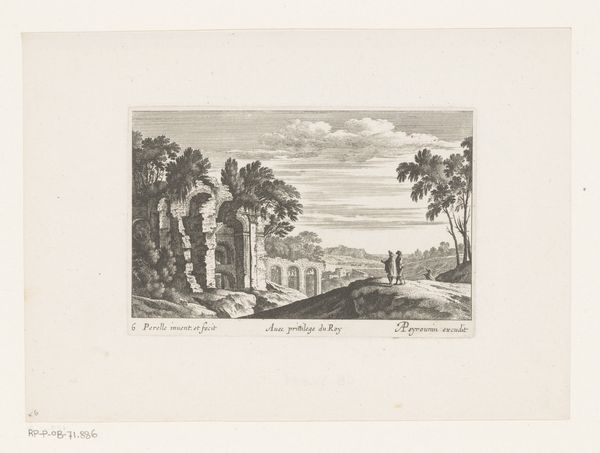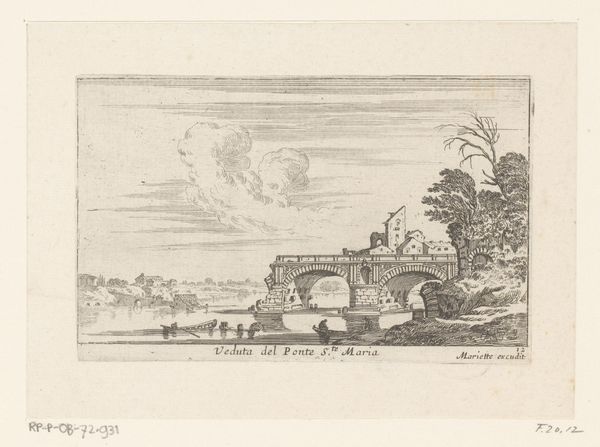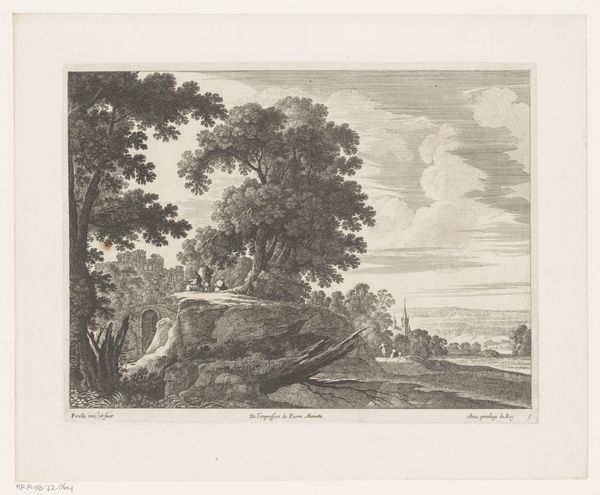
print, engraving
#
baroque
# print
#
old engraving style
#
landscape
#
line
#
cityscape
#
engraving
Dimensions: height 96 mm, width 159 mm
Copyright: Rijks Museum: Open Domain
Curator: This is "River Landscape with Walking Couple" by Nicolas Perelle, made sometime between 1613 and 1695. It's currently held in the Rijksmuseum. It’s a baroque engraving. What are your initial impressions? Editor: There's a quiet intimacy here, a certain simplicity. The density of those tiny etched lines… the sheer labour that went into creating the tones. Look at the texture in those rocks. Curator: Absolutely. Perelle's print demonstrates the baroque aesthetic through idealized nature, a kind of classical picturesque scene meant to convey a sense of order and control in a rapidly changing world. Consider how printmaking also made these images more widely available. Editor: The fact that it's a print underscores this point so strongly. Each line meticulously carved to then be multiplied, shared… bringing this seemingly idealized landscape to a much wider audience. How do you think this affected perceptions of landscape at the time? Curator: It democratized access. Prints like these made landscape views available to those who might never travel to such places themselves. They helped shape a shared visual culture and a desire for, perhaps, even control over the landscape—shaping gardens and estates to match these images. Editor: Interesting idea about control, because on one level the scene appears ‘natural’, yet the mode of its creation is totally controlled – through tools and technical skill. It really shows how what seems effortless often relies on immense labor. Curator: Yes, the landscape becomes a kind of stage upon which society's values are projected. And look closely, you’ll note there’s actually quite a lot of detailed town and cityscape-scape imagery contained within it, perhaps referencing trade and broader connections with society. Editor: Thinking about all the hands involved—from the artist to the printer to the person selling these – you realize it’s the product of many people's labour and skills. Makes you appreciate the material production behind this idealized scenery. Curator: Indeed. So much context packed into a tiny, finely rendered image. Editor: Precisely, which I find interesting for a so-called 'landscape' scene. All the people who participated in its making are absent in the picture. I'm really struck by the contradictions here.
Comments
No comments
Be the first to comment and join the conversation on the ultimate creative platform.
